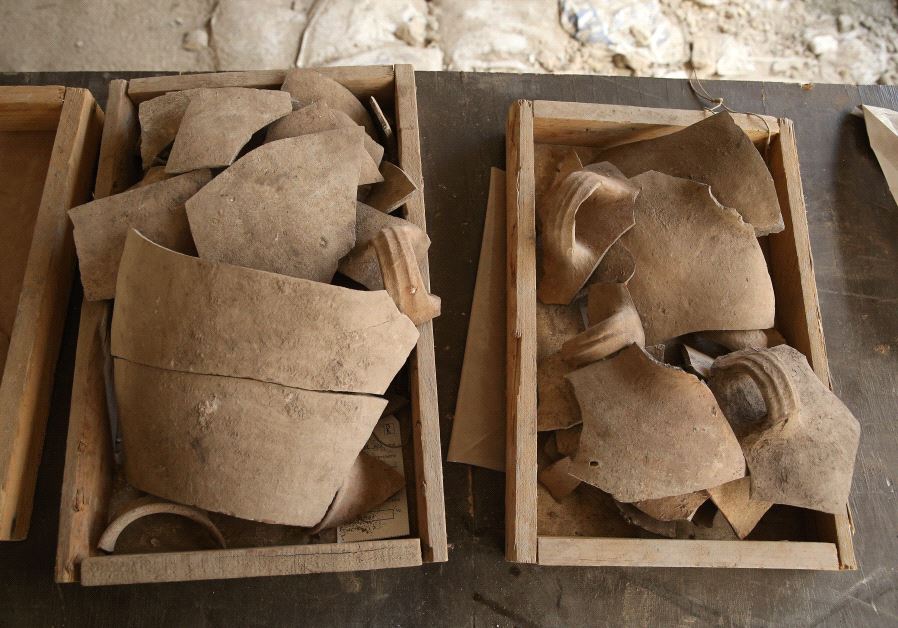Evidence of Babylonian destruction of Jerusalem unearthed in City of David
By Daniel K. Eisenbud
“These findings depict the affluence and character of the Judean Kingdom and are mesmerizing proof of the city’s demise at the hands of the Babylonians.”
During the excavations, concentrated on the eastern slope of the City of David, structures dating more than 2,600 years ago were unearthed after being delicately extricated from collapsed layers of stone, the IAA said Wednesday. “Nestled within the collapse, many findings have surfaced, including: charred wood, grape seeds, pottery, fish scales and bones, and unique and rare artifacts,” the Authority said in a statement.
“These findings depict the affluence and character of Jerusalem, capital of the Judean Kingdom, and are mesmerizing proof of the city’s demise at the hands of the Babylonians.”
Notable among the findings included dozens of storage jars, used to contain both grain and liquids, with stamped handles depicting the seal of a rosette.

Shattered jugs attesting to the destruction (COURTESY OF ELIYAHU YANAI / CITY OF DAVID ARCHIVE)
According to the excavations directors, Ortal Chalaf and Dr. Joe Uziel, the seals are characteristic of the end of the First Temple Period and were used for the administrative system that developed towards the end of the Judean dynasty.
“Classifying objects facilitated controlling, overseeing, collecting, marketing and storing crop yields,” the researchers said in a joint statement. “The rosette, in essence, replaced the ‘For the King’ seal used in the earlier administrative system.
“The wealth of the Judean Kingdom’s capital is also manifest in the ornamental artifacts surfacing in situ. One distinct and rare finding is a small ivory statue of a woman. The figure is naked, and her haircut, or wig, is Egyptian in style. The quality of its carving is high, and it attests to the high caliber of the artifact’s artistic level, and the skill par excellence of the artists during this era.”
An ivory statue in the image of a woman (CLARA AMIT, COURTESY OF THE ISRAEL ANTIQUITIES AUTHORITY)
Chalaf and Uziel added that the excavation’s findings illustrate that Jerusalem had extended beyond the line of the city wall before its destruction.
“The row of structures exposed in the excavations is located outside, beyond the city wall that would have constituted the eastern border of the city during this period,” they said. “Throughout the Iron Age, Jerusalem underwent constant growth, expressed both in the construction of numerous city walls, and the fact that the city later spread beyond them.”
The structure in which shattered jugs were found, attesting to the destruction (COURTESY OF ELIYAHU YANAI / CITY OF DAVID ARCHIVE)
Moreover, they said excavations carried out in the past in the area of the Jewish Quarter have shown how the growth of the population at the end of the 8th Century BCE led to the annexation of the western area of Jerusalem.
“In the current excavation, we may suggest that following the westward expansion of the city, structures were built outside of the wall’s border on the east, as well,” the researchers said.
The excavation was funded by the City of David Foundation (Elad). [ original posted on jpost.com ]
Category: Heritage, Israel, Minhag Bavel



